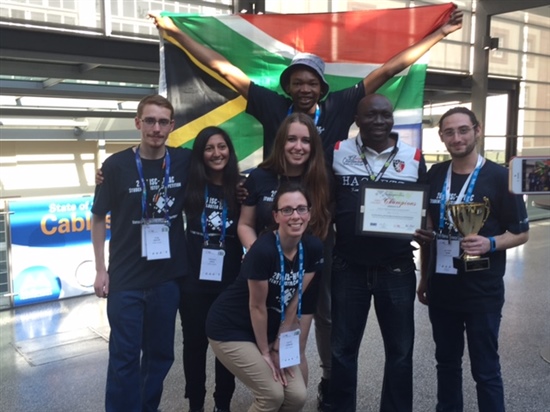It’s been an extraordinary month for Dell on the HPC front. We’re seeing excellent momentum in HPC, as can be witnessed by the announcements and recent customer successes announced leading up to and at the ISC High Performance 2016 conference.
First, we had the pleasure of helping one of our customers and partners, the Texas Advanced Computing Center (TACC) at The University of Texas at Austin, celebrate three significant milestones—a $30 million award from the National Science Foundation (NSF), the 15th anniversary of TACC, and the dedication of a new building for advanced computing at their JJ Pickle Research Campus.
With the NSF award, TACC will deploy a new supercomputing system, “Stampede 2,” as a strategic national resource to provide HPC capabilities for thousands of researchers across the U.S. This Dell HPC System, based on Dell PowerEdge servers equipped with 2nd Generation Intel Xeon Phi processors (KNL), will push the envelope of computational capabilities, enabling breakthroughs never before imagined. Stampede 2 will deliver peak performance of up to 18 petaflops, twice the performance of Stampede, which impressively is the 12th fastest system in the world three and half years after its inception, according to the June 2016 TOP500 list. An initial system, Stampede-KNL, has been delivered to TACC in a collaboration between Dell and Intel, providing early access to systems with Xeon Phi processors. The system was ranked #117 on the June 2016 TOP500 list.
Second, we had the honor of attending the unveiling of the fastest supercomputer on the continent of Africa, the Centre for High Performance Computing’s (CHPC) “Lengau” system. The Dell-powered Lengau (“Cheetah” in Setswana) provides high performance computing access and will help drive new research, new innovations and new national economic benefits in a country filled with both talent and opportunity.
This new CHPC system, ranked #1 fastest in Africa and #121 in the world, is 15 times faster than the Centre’s previous system, yet within a smaller footprint and consuming less energy. Lengau is comprised of 1,039 Dell PowerEdge servers, totaling 19 racks of compute nodes and storage. It has a total Dell Storage capacity of five petabytes, and uses Dell Networking Ethernet switches and Mellanox FDR InfiniBand. The system will enable new opportunities and avenues in cutting-edge research (such as the Square Kilometer Array) and will provide the computational capacity in the private sector to help spur national economic growth.
At ISC16, the Dell and CHPC-sponsored student cluster team took home its third title after achieving first place with the highest overall score for all benchmarks. We are honored to support this brilliant group of students, and are extremely proud of their performance. The team visited the Dell Round Rock campus in February to meet with HPC experts, check out Dell’s next-generation HPC and thermal labs, become familiar with the cluster systems and receive hands-on tutorials and feedback sessions.
Finally, Dell made significant announcements during ISC High Performance 2016. Dell’s June 20th press release detailed the availability of new Dell HPC Systems, early access to innovative HPC technologies, technology partner collaborations with Intel, NVIDIA, Mellanox, and Cycle Computing, and successful global customer implementations. I encourage you to read it for more detail on how Dell is working to bring traditional HPC capabilities to mainstream businesses and to see examples of current Dell successful customer implementations, and investments we’re making to continue to lead in this space.
Dell is doubling down on the HPC opportunity. We’re taking what we’ve learned from the most sophisticated research institutions and government agency supercomputers, and making it easier for a broader set of customers to benefit from HPC systems in this digital world. For example, our Dell HPC Systems for life science, research and manufacturing workloads, offer fully tested and validated building block systems, backed by a single point of hardware support and service options across the solution lifecycle. And, these systems are even easier to design, configure and ship through the Dell HPC System Builder, which enables us to configure Dell HPC Systems to fit specific customer wants, needs and environments.
I encourage you to visit the resources below to learn more about Dell HPC systems, strategy and momentum:
- Press Release: Dell Announcements at ISC 16
- Blog: HPC Customer Momentum
- Blog: South Africa Students Visit Dell’s Round Rock Campus for HPC Training
- Video: TACC’s Stampede System
- Video: Centre for High Performance Computing (South Africa)
- Video: Dell HPC Innovation Lab
- Video: Addison Snell, Intersect360 Research on Dell and HPC
- Video: University of Cambridge HPC Solution Center
- Join the Dell HPC Community
- Follow us at Dell Enterprise Group on LinkedIn, and @DellHPC on Twitter
